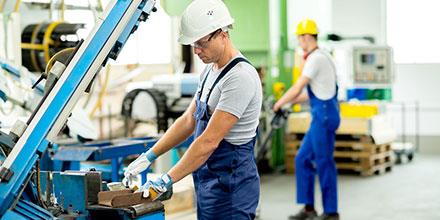
Machine safety is of the utmost importance for manufacturers to reduce the risk of accidents and protect their staff. However, the value of a comprehensive safety strategy can extend far beyond these benefits. Following are three tips for machine safety that can help manufacturers reap the rewards that safety brings.
1. Consider Each Machine Individually
When installing a new machine, plant managers must carefully consider how it fits into the manufacturing facility as a whole to develop safe and ergonomic working practices. The plant manager should conduct risk assessments to verify that the environment is safe while taking into account factors such as machine emissions, which can impact the ventilation in the facility.
Each type of machine will have different safety considerations. For example, electrical equipment likely will be covered by the EN 60204-1 standard, which specifies requirements for enclosures, isolators, actuators and documentation.
Manufacturers not only must ensure their machines have been designed based on the relevant standards but also that they operate in accordance to them. Some equipment may need to conform to directives for dangerous substances and explosive atmospheres. Compliance with these regulations will be crucial to safeguard your production facility and, more importantly, your staff.
2. Train Personnel
Without a full understanding of how to operate machinery, personnel could be at risk of injury. Conducting detailed training to teach your staff the correct processes and procedures for machine operation is essential for managing safety. This should also cover the required personal protective equipment (PPE) that is to be worn during operation.
Checklists can be provided to make sure operation and maintenance are performed correctly. There should also be a designated individual, such as a safety manager, whom personnel can contact in case of confusion or query. This will help to eliminate the risk of human error.
3. Connect
Adding sensors to a production line to monitor the performance of your equipment is another way to improve workplace safety. By making use of internet of things (IoT) technology, plant managers can gather and analyze real-time information about their equipment. This can reduce common accidents and identify issues with machinery that may also be a safety risk to personnel.
Connected machines can measure equipment parameters to warn of any risk of overheating, which can lead to a breakdown. If a serious hazard is detected, personnel can be evacuated. However, if it is simply a broken part, a connected system can warn the plant manager to order a replacement component, perform maintenance and get the system back on its feet.
Workplace safety is critical to reduce the risk of fatal and non-fatal accidents. The benefits it offers to workers are enough, but connecting systems to improve productivity is an added bonus.
About the Author
Jonathan Wilkins is the marketing director for EU Automation, an obsolete industrial parts supplier.




